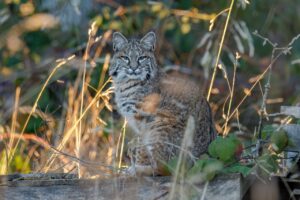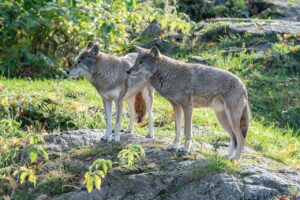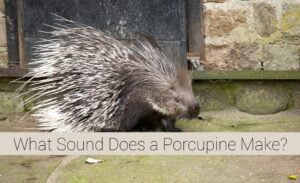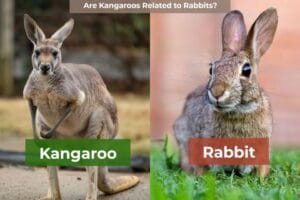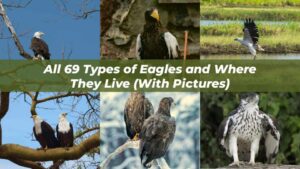Animals are known for their different behaviours, movements and general ways of life. While some soar the sky and live in the waters, others are found on land.
Some animals are known for their iconic waddling behaviour that is hard to miss. For these animals this is the only way they can easily move around given their habitat.
In this article, we will look at the top 10 animals that waddle when they walk. You will also learn why these animals waddle and how they do it.
Top 10 Animals That Waddle When They Walk
1. Penguins

Family: Spheniscidae
Penguins are the first animals that come to mind when you talk about waddling. These aquatic flightless birds have short, stubby feet that make them excellent swimmers.
On land their feet make it difficult to walk as humans and other animals normally would; this is why they have adopted the waddle style of walking.
They waddle by shifting their weight from side to side to move forward. It is also a very energy-efficient way for them to walk on slippery ice and snow.
Since penguins are known to live in extremely cold habitats, thanks to their durable coats, they are more adapted to swimming than walking on the icy ground.
Almost all penguin species are found in the Southern Hemisphere. This includes places like Antarctica, the Galapagos Islands, South Africa, Australia, New Zealand, and the coasts of South America.
On South Georgia’s St. Andrews Bay, there are over 400,000 king penguins living in their natural habitat. This amount of penguins is enough to fill a big city.
Fun Penguin Facts
- Did you know there are around 18 different species of penguins? These penguins have different sizes and appearances, from the tiny Little Blue Penguin to the Emperor Penguin.
- Some penguins can hold their breath for over 20 minutes in the water.
- A group of penguins on land is called a waddle or a rookery.
2. Ducks

Family: Anatidae
Ducks are another flightless bird that are known to waddle when they walk. These birds, just like penguins, are very good swimmers, with webbed feet.
Their short legs are set wide apart on their bodies, which makes walking difficult. This wide stance is great for paddling in the water and provides stability on slippery riverbanks.
On land, they rely on side-to-side motion to move around. Docks are found on almost every part of the world except Antarctica.
You are probably used to seeing ducks in your local park pond or at farmhouses across North America, Europe, Asia, Africa, and Australia.
Fun Duck Facts
- Newly hatched ducklings can walk and swim almost as soon as they hatch.
- Ducks have waterproof feathers, thanks to an oil they spread on them from a gland near their tail.
- Male ducks are called drakes, females are called ducks (or hens), and baby ducks are ducklings.
3. Platypuses

Scientific Name: Ornithorhynchus anatinus
Platypuses are semi-aquatic mammals native to eastern Australia. Also referred to as the duck-billed platypus, they have their legs at the sides of their bodies rather than underneath.
They are perfect swimmers, but on land they waddle when they walk. Platypuses also have short legs and webbed feet, just like many other animals on this list.
These creatures have features that seem like a combination of a duck’s bill, a beaver’s tail, and otter-like feet.
You can find waddling platypuses in their natural habitat, in eastern Australia, including Tasmania. Their habits include freshwater rivers, streams, and lakes, and the best times are at dawn and dusk.
Fun Platypus Facts
- Platypuses are one of only five species of monotremes, mammals that lay eggs.
- Male platypuses have venomous spurs on their hind ankles. This venom can be very painful.
- Their bills are sensitive, and they use them to detect food underwater through electroreception.
4. Armadillos

Order: Cingulata
Another animal that waddles when they walk are armadillos. These little animals are built like an armoured tank thanks to their bony shells.
Armadillos have short and strong legs that are designed for digging and burrowing. Their bodies are also inflexible due to the armour on their back. This combination makes them waddle as they move.
Armadillos are primarily found in the Americas, from places like the United States down through Central and South America. You can find them in habitats like grasslands, rainforests, and semi-deserts.
Fun Armadillo Facts
- The word armadillo means little armoured one in Spanish.
- When scared, some armadillo species can roll up into a tight ball for protection.
5. Badgers

Superfamily: Musteloidea
Badgers are popular for their waddle-like walk. This is due to their short legs, which are meant for digging underground.
The tunnel system of a badger is called a sett. Underground, the long claws are perfect for excavating earth.
Although badgers waddle, they can run at 20 mph for short periods. over short distances.
These omnivores have a diet that consists of different animals and plants, like earthworms, insects, grubs, small mammals, amphibians, reptiles and birds.
Badgers are found on almost all continents except Antarctica. In Africa, honey badgers are known to feed on honey, porcupines, and venomous snakes.
Fun Badger Facts
- Badgers are omnivores that eat everything they come across in the wild.
6. Porcupines

Infraorder: Hystricognathi
Porcupines are large rodents with coats of sharp quills. They have short legs and a rounded body, which gives them a slow, waddle-like walk.
These creatures are not built for speed; this is why they have a primary means of defence, those sharp quills.
Porcupines are found in the Americas, Africa, and Asia. North American porcupines have a more waddly walk. They live in forests and woodlands, sometimes climbing trees.
African porcupines, like the crested porcupine, are larger and inhabit grasslands and open woodlands.
Fun Porcupine Facts
- A baby porcupine is called a porcupette, and their quills are soft at birth but harden within a few hours.
7. Hippopotamuses

Scientific Name: Hippopotamus amphibius
Yes, hippopotamuses are among the list of animals that waddle. These massive animals are huge; they have short legs and huge barrel-shaped bodies.
Although they can run fast, even faster than a human, hippos have a gentle waddle quality due to their size and leg structure.
These semi-aquatic mammals are native to sub-Saharan Africa in countries like Kenya, Ethiopia, South Africa, Tanzania, Zambia, and the Gambia.
Fun Hippo Facts
Hippos are more closely related to whales and dolphins than to other land mammals.
8. Beavers

Genus: Castor
Another animal that has an iconic waddle is the beaver. They have large and flat tails, which are used for balancing on land and steering in water.
Their hind feet are large and webbed for swimming, while the front paws are small and better suited for carrying mud and sticks.
On land, the only way they can move with their short legs and bulky bodies is to waddle. Beavers are found across Canada and the United States and parts of Europe and Asia.
They prefer freshwater rivers and streams where they collect branches and construct dams and lodges.
Fun Beaver Facts
Beavers are the second-largest rodents in the world, just after the capybara.
9. Otters

subfamily: Lutrinae
Just like many other animals on this list, Otters are very good swimmers. They have long, slender bodies and short legs that are more suitable for swimming.
On land Otters often arch their backs and push off with their hind legs, which gives them a waddle-like run.
Otters are found on every continent except Australia and Antarctica. The different species of otters are found in freshwater habitats across North America, Europe, Asia, and Africa.
Fun Otter Facts
- Sea otters hold hands while they sleep so they don’t drift apart.
- Otters can show some level of intelligence by using tools like rocks to crack open shellfish.
10. Wombats

Family: Vombatidae
This list would not be complete without wombats. These muscular marsupials from Australia have short legs and strong claws that are good for digging.
Their muscular appearance and short legs makes wadding the only possible way to walk and run in the wild.
Wombats can run at speeds of up to 40 kilometres per hour. They are even being compared with Usain Bolt when it comes to speed.
In Australia, wombats live in different habitats like forests, woodlands and even heathlands and mountainous areas.
Fun Wombat Facts
- A group of wombats is called a wisdom, a mob, or a colony.
- The pouch of a wombat is faced backward so it does not get filled with dirt when they dig.
Other Animals
There are many other waddling animals that did not make the top 10, like swans, geese, cormorants, and even dachshunds. Most of the animals that waddle have short legs and compact ankles that make it difficult for them to take long walks.
Conclusion
Waddling is a good thing for some animals because it helps them conserve energy when moving on land. In this article we have listed the top 10 animals that waddle when they walk.
Notice most of the animals on this list are semi-aquatic or burrowing animals. Some of the animals in this category are adapted to survive in their particular habitats without needing to sprint like animals in the savanna.
In summary, some of the animals that waddle are penguins, ducks, platypuses, armadillos, badgers, porcupines, hippopotamuses, beavers, and otters.
FAQs
What animal group is a waddle?
A group of penguins on land is called a waddle. Other names for a group of penguins are rookery, colony, and huddle.
Why do so many animals that waddle have short legs?
Animals with short legs, especially if those legs are set wide apart on their bodies, often waddle because it’s a mechanically efficient way for them to move. Longer strides are difficult, so a side-to-side shift of weight helps them propel forward. It’s often a trade-off for other abilities, like being great swimmers or diggers!
Are waddling animals slow?
No, waddling animals are not slow. Some animals, like hippos and even wombats, can move very fast when it becomes necessary. Other animals, like penguins, are very fast in the water.

Hi, I’m Louis Ojibe, and I grew up around wildlife in Africa. I have always been fascinated by animals and nature across the world.
As a child, my parents used to take me to see wild animals like lions, elephants, gorillas, tortoises, and many others at our local zoo.




